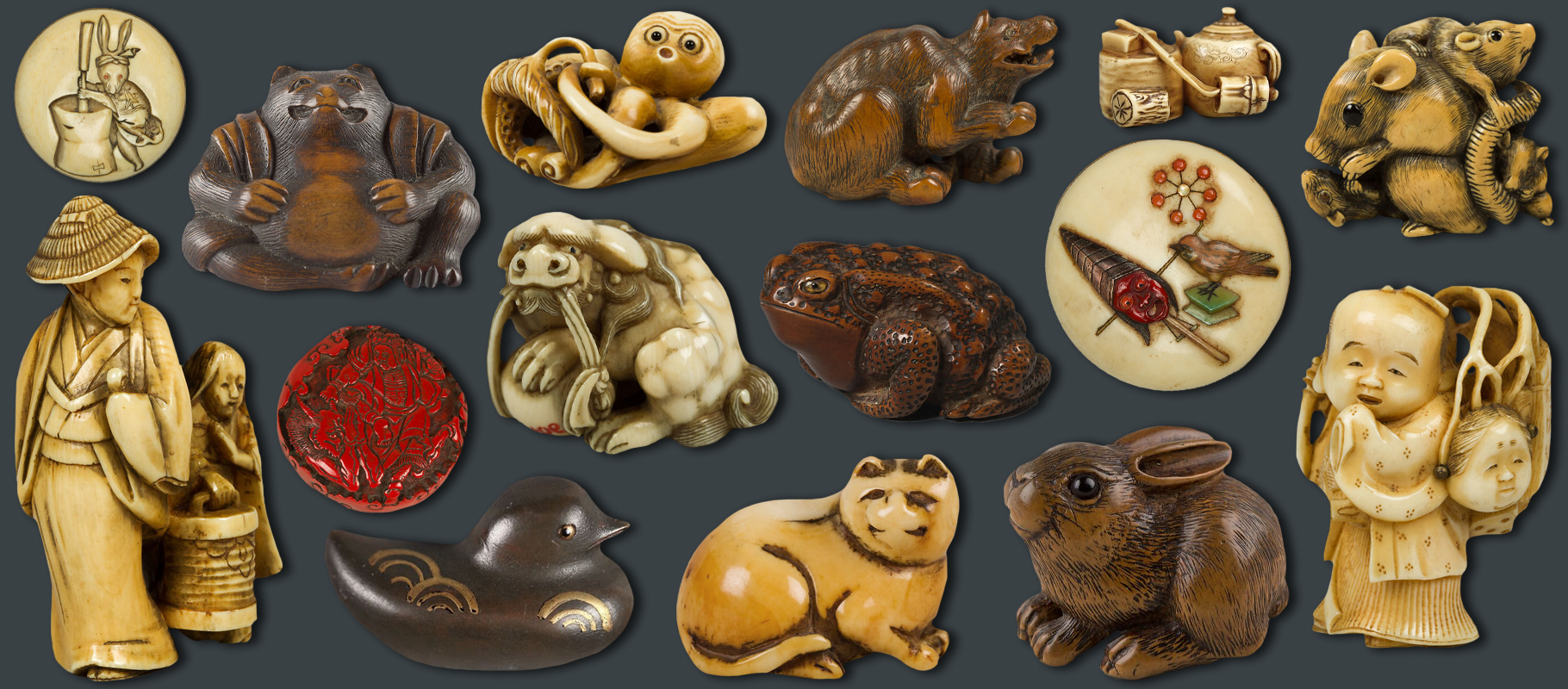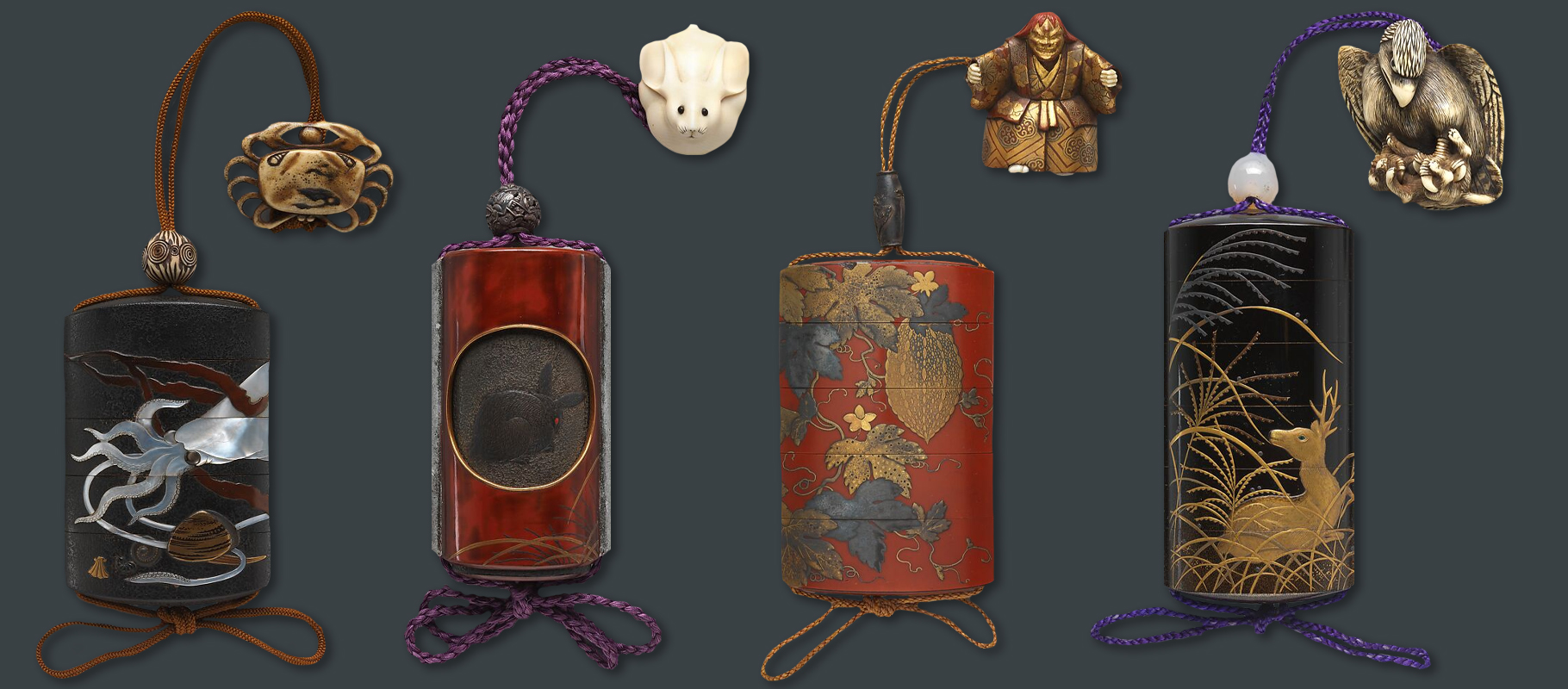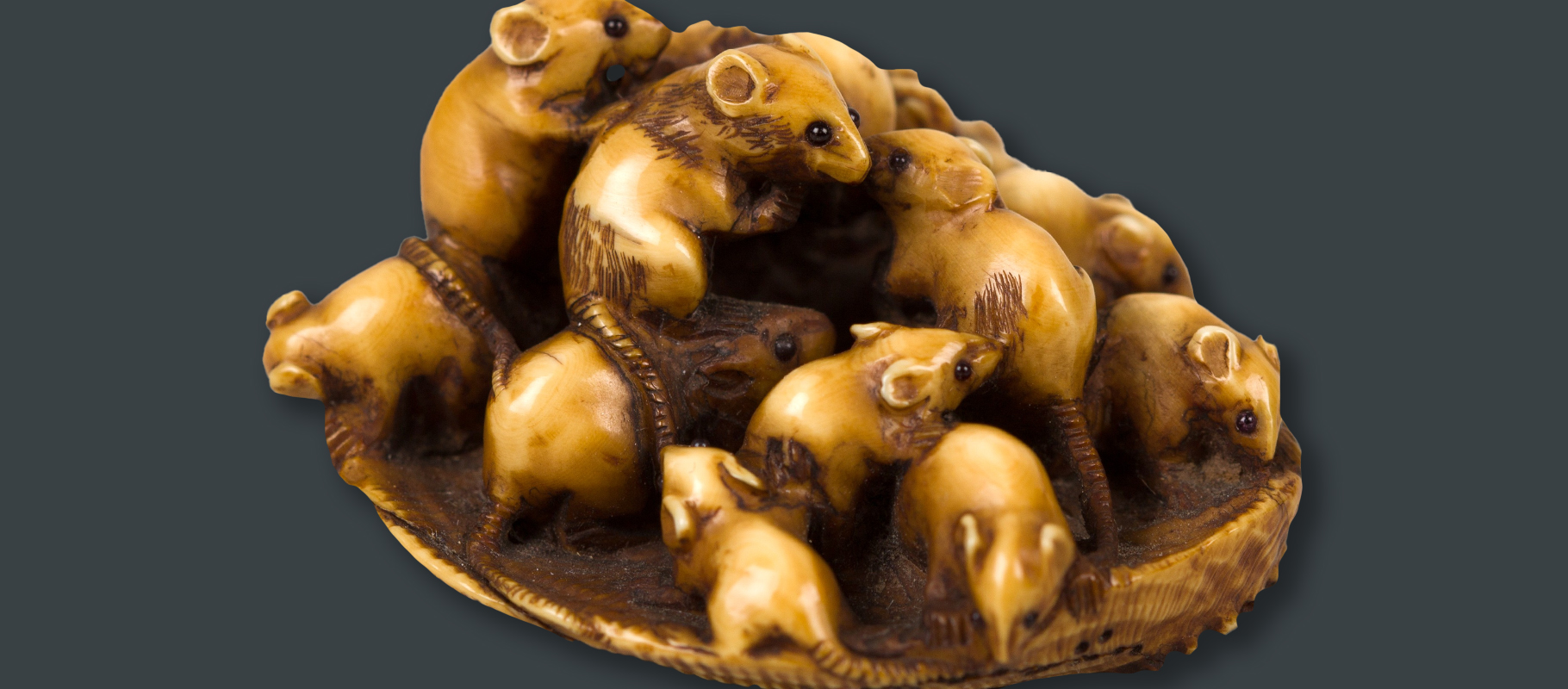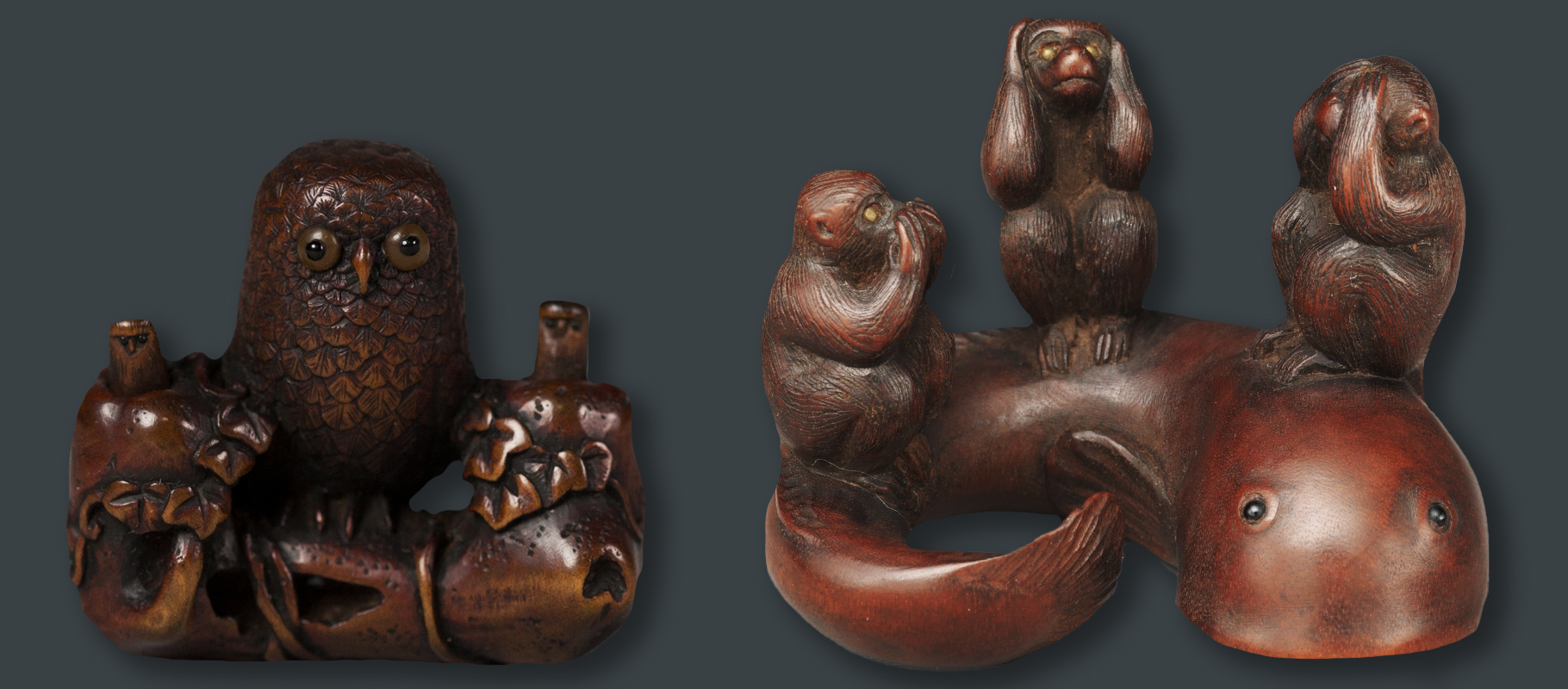Welcome to our conservation curiosity series, this week we are looking into the world of miniature Japanese sculptures known as netsuke. These unassuming figurines have been known to fetch six figures at auction, but are not often recognised by the untrained eye.
 Above: a selection of antique netsuke carved in ivory, wood and lacquer
Above: a selection of antique netsuke carved in ivory, wood and lacquer
Typically hand carved in wood or ivory, netsuke have been produced for hundreds of years. This article will look into their history, value and care.
If you would like to learn about more unusual and unique conservation curiosities, please take a look at our previous articles on snuff boxes and dummy boards.
What is a netsuke?
Netsuke are small Japanese sculptures, originally designed to decorate traditional clothing accessories. The word netsuke is formed of two Japanese characters:
根 (ne) meaning root
付 (tsuke) meaning attached
Netsuke were crafted as a type of toggle to open and close a small pouch called an Inro, as kimono robes did not feature pockets. Over time, this functional item became more elaborate and detailed, before finally becoming an established artistic medium.
 Above: a selection of ‘Inro’ cases with their original netsuke
Above: a selection of ‘Inro’ cases with their original netsuke
Most popular during Japan’s Edo period (1603-1867), netsuke began to decline in use and production during the late 19th century as clothes became less traditional and their functionality was no longer required. However, a growing market for antique netsuke was now established and today they are still much sought after by collectors in Europe, America and Asia.
 Above: netsuke in the shape of a Noh dancer, a goat on a rock, a Noh mask, a circluar bird motif and an octopus, all from the Edo period
Above: netsuke in the shape of a Noh dancer, a goat on a rock, a Noh mask, a circluar bird motif and an octopus, all from the Edo period
There are several collectable genres of netsuke, including:
Katabori-netsuke: the most popular form, a wood or ivory carving in a 1 to 3 inch solid form
Karakuri-netsuke: a netsuke with hidden or special surprise features
Men-netsuke: a netsuke carved in the form of a dramatic ‘Noh’ mask
 Above: netsuke made of carved bone, ivory and porcelain
Above: netsuke made of carved bone, ivory and porcelain
Anabori-netsuke: a netsuke with a hollow centre
Obi-hasami: an long netsuke with curved ends
Manjū-netsuke: a circular netsuke with relief carving
Ryūsa-netsuke: a circular netsuke with lace-like carving allowing it to be semi see-through
What is the value of netsuke?
Netsuke can be valued by their age, artistic skill and a known artist. The record for a netsuke sale was in December 2022 with a price of $441,300 including premium at Bonhams New York. The 4 inch netsuke was originally estimated at only $15,000-20,000, so it goes to show that the right collector is willing to pay above the odds for these treasured sculptures.
Netsuke materials
Netsuke may be formed of various historic materials, some may be more unusual than others. As well as hardwood, lacquer, bamboo and clay, netsuke are also traditionally carved from ivory or bone. This may include the use of whale bone or baleen, walrus tusks, or rhinoceros horn.
 Above: a close up of an ivory and horn netsuke by Masamitsu, late 19th century
Above: a close up of an ivory and horn netsuke by Masamitsu, late 19th century
Ivory can only be sold in the UK if it is antique, this means it must have been carved before 1947. Due to different international laws, it should not be attempted to sell outside of the UK without professional advice.
Caring for netsuke
As small and sensitive antiques, netsuke should only be displayed in shaded conditions with a controlled environment. The humidity and temperature depend on the exact type of material used. For detailed information on the care and restoration of ivory items, please click here. And for care advice about wooden objects, please see our article here.
 Above: wooden netsuke including an owl with two suprise chicks and three monkeys sitting on a fish (Sanbiki Saru), both 19th century
Above: wooden netsuke including an owl with two suprise chicks and three monkeys sitting on a fish (Sanbiki Saru), both 19th century
Some of the most valuable netsuke sculptures have a trace amount of original paint on their surface. It is important to maintain the netsuke in a way that will not disturb this important feature. When netsuke is stored away or transported, ensure it is unable to rub against any hard or abrasive surfaces.
Wooden netsuke may be over taken with mould if it is left in a humid environment following an escape of water or flood. Mould spores should be killed off and removed by a professional conservator to prevent reoccurrence and structural damage to the piece. We recommend speaking to our team as soon as possible to assist with situations such as this.
How can we help?
If you have a japanese netsuke antique or a similar item in need of care, please get in touch with our team for further advice and an obligation-free quote today.
To make contact please email us via [email protected] or call 0207 112 7576

 Above: a selection of antique netsuke carved in ivory, wood and lacquer
Above: a selection of antique netsuke carved in ivory, wood and lacquer Above: a selection of ‘Inro’ cases with their original netsuke
Above: a selection of ‘Inro’ cases with their original netsuke Above: netsuke in the shape of a Noh dancer, a goat on a rock, a Noh mask, a circluar bird motif and an octopus, all from the Edo period
Above: netsuke in the shape of a Noh dancer, a goat on a rock, a Noh mask, a circluar bird motif and an octopus, all from the Edo period Above: netsuke made of carved bone, ivory and porcelain
Above: netsuke made of carved bone, ivory and porcelain Above: a close up of an ivory and horn netsuke by Masamitsu, late 19th century
Above: a close up of an ivory and horn netsuke by Masamitsu, late 19th century Above: wooden netsuke including an owl with two suprise chicks and three monkeys sitting on a fish (Sanbiki Saru), both 19th century
Above: wooden netsuke including an owl with two suprise chicks and three monkeys sitting on a fish (Sanbiki Saru), both 19th century




